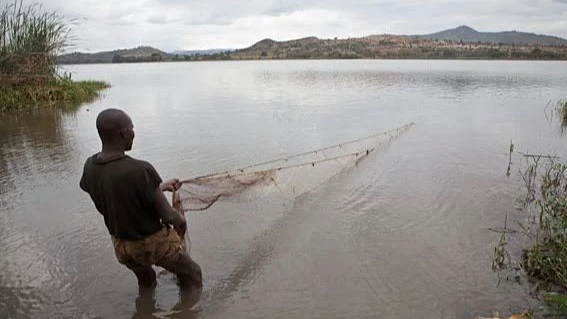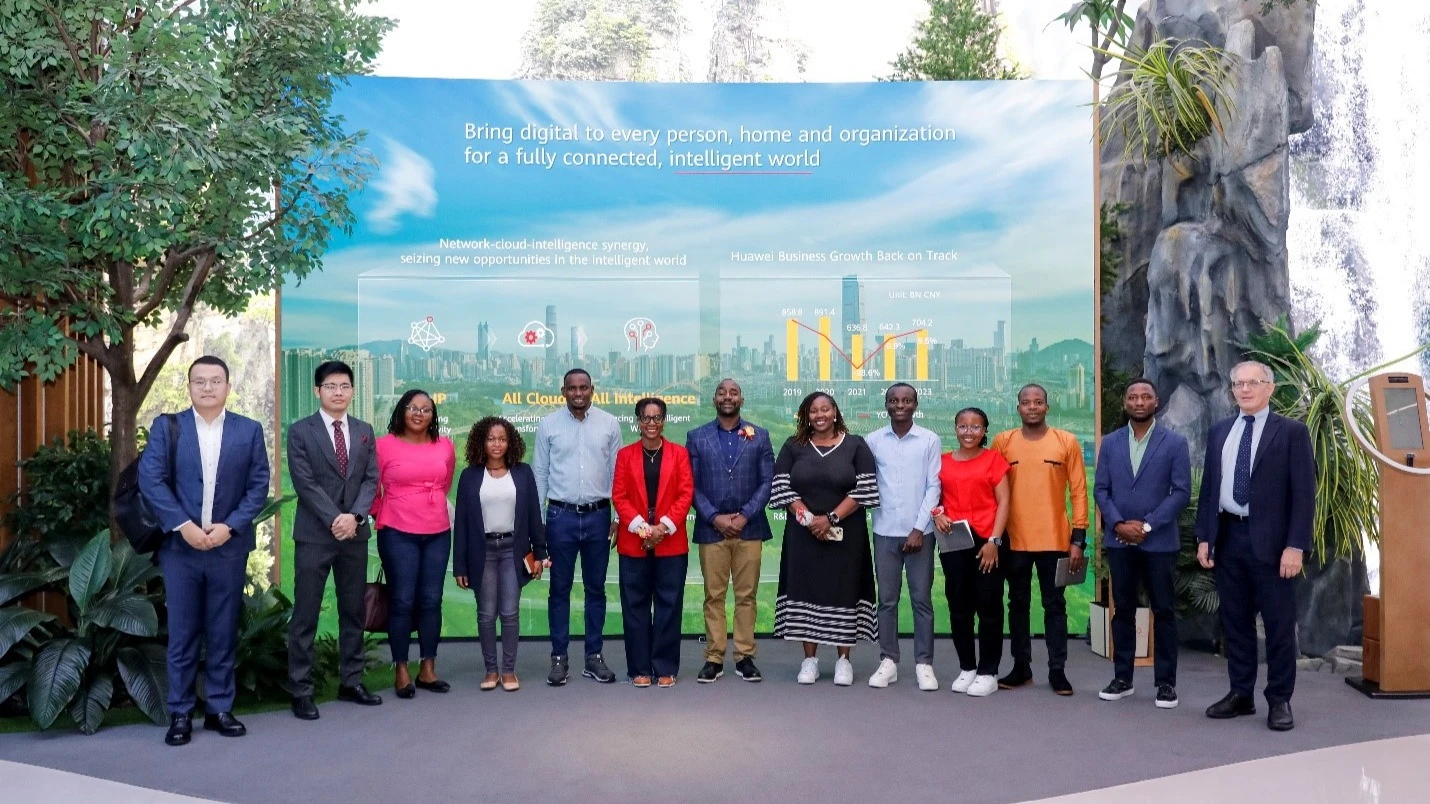Revealed: Oxygen crisis at Lake Babati, solutions required for depletion threat

THE calm waters of Lake Babati, named after Babati district in Manyara region hide a dangerous secret - the looming threat of algal blooms. Scientific studies have revealed that these blooms can disrupt the delicate balance of oxygen levels in the lake, potentially causing harm to the ecosystem.
The fate of lake hangs precariously as it confronts the menace of algal blooms. Might this scenic lake eventually transform into a desolate expanse akin to the lifeless Dead Sea, void of any semblance of vitality or biodiversity?
The prospect of Lake Babati resembling a barren wasteland like the Dead Sea is alarming. Algal blooms and decreasing oxygen levels are jeopardizing the rich biodiversity of the lake. Will the lively fish, aquatic flora, and diverse organisms dependent on the lake face extinction in a low-oxygen setting, echoing the eerie silence of the Dead Sea?
As scientific reports draw attention to the detrimental impact of algal blooms on Lake Babati's oxygen levels, a pressing concern emerges; what happens if oxygen levels diminish in the lake? Oxygen is essential for the survival of its inhabitants, and any shortage could upset the fragile ecological harmony of Lake Babati, casting a cloud of uncertainty over its previously thriving ecosystem.
The potential depletion of oxygen in the lake raises concerns about the intricate dependencies that support its diverse flora and fauna. As oxygen levels decline, what impacts will be felt throughout the ecosystem, jeopardizing the very foundation of life in Lake Babati?
As the threat of oxygen depletion looms, one can't help but question its significance. The silent suffocation of oxygen-depleted waters poses a serious risk to the biodiversity and ecological balance of the lake.
Will Lake Babati succumb to a fate shared by numerous water bodies, or will proactive steps and swift intervention secure its natural splendor and thriving ecosystem for the benefit of future generations? The responsibility for the lake's future rests with those who cherish and protect its delicate ecosystem.
This journalist made several attempts to contact Dr. Suleiman Jafo, the Minister in the Vice President's Office responsible for environmental conservation. Despite multiple unanswered calls and a follow-up text message, a response is still awaited.
As emphasized earlier, the alarming escalation of microalgae proliferation in Lake Babati has stirred scientific concern due to its detrimental effects. Urgent intervention is crucial to address this issue, believed to stem from human activities near the lake.
A study published this month titled “The Effects of Algal Blooms on Oxygen Levels in Lakes Babati and Eyasi, Tanzania,” has unveiled the alarming reality of dwindling oxygen levels in these lakes, jeopardizing the well-being of aquatic organisms.
The research conducted by scientists Amelia Buriyo from the University of Dar es Salaam (UDSM), Nyatwere Mganga, and Mary Melchiory from the University of Dodoma (UDOM), boldly points out that algal blooms have detrimental effects on ecology, health, commercial fishing, tourism, and recreation, significantly impacting diverse sectors and ecosystems.
In fact, it unveils the concerning correlation between algal concentration and dissolved oxygen levels in the studied lakes, highlighting the potential risk of persistent nutrient loading on Lake Babati, leading to decreased oxygen levels.
As per the trio of researchers, this significant decrease in oxygen levels serves as a vital early warning signal for aquatic life.
Actions impacting the environment
Dr. Harrison Mndeme, an independent environmentalist, posited that the mounting pressures of population growth and societal advancement significantly amplify the repercussions of human actions on the natural environment.
For instance, he draws a correlation between rising water demand and the influx of wastewater, agricultural runoff, and sewage into surface water ecosystems, all stemming from human activities.
“These inputs further exacerbate the eutrophication of inland waters. Lakes and reservoirs, essential freshwater reservoirs, with their low flow rates, prolonged water residence times, and inadequate self-purification abilities, present optimal conditions for algal growth, exacerbating environmental issues,” he affirmed.
He therefore affirms that the recurrent occurrences of algal blooms have become pervasive phenomena impacting the Earth’s atmosphere due to human activities.
He further elucidates that algal blooms are a consequence of the rapid reproduction of phytoplankton on a large scale in conducive environmental settings.
This phenomenon alters dissolved oxygen (DO) levels, ultimately resulting in the depletion of oxygen, causing fatalities among numerous aquatic species and inflicting severe harm on the health of aquatic ecosystems.
He concurs with the study’s findings, acknowledging that certain phytoplankton species also release biotoxins, like microcystin, which pose risks to the safety of drinking water and human health.
In fact, the presence of certain microalgae can disrupt the natural balance of an ecosystem, leading to a degradation in water quality, can cause water to turn green, develop a moldy taste and unpleasant odor, and pose a danger if consumed.
The report findings showed that the average algae content was markedly elevated in Lake Babati compared to Lake Eyasi, surpassing acceptable levels for domestic water supply and ecosystem health.
On the other hand, the research indicates that an inverse correlation was observed between algae content and DO levels in Lakes Eyasi and Babati, indicating that algal blooms play a role in reducing DO levels.
Dr. Hadija Mohammed, a conservationist, emphasizes the necessity for strict management policies to curb unsustainable practices around Lake Babati and other water bodies that contribute to nutrient loading, fueling the proliferation of algal overgrowth.
Population surge near Lake Babati
Another study titled “Implications of Rapid Urban Sprawl on Water Resources Management: The Case of Lake Babati, Tanzania” confirms the rapid population growth in Babati town and its surrounding areas, particularly noting Bagara ward as having the highest population density in proximity to Lake Babati.
Emmanuel Mitinje, Hussein Omar, and Najum Juma, the researchers behind the study, have identified two primary factors driving population growth: migration (58 percent) and natural increase (37 percent).
According to available data, Babati town experienced a significant population growth from 44,000 residents in 2002 to 93,108 inhabitants in 2012. Projections suggested that the population would reach 105,610 individuals by 2022; however, recent figures from the National Bureau of Statistics (NBS) reveal a current population of 375,200 as per the 2022 census.
In their view, the detrimental consequences of rapid urban sprawl towards Lake Babati and its water resources encompass deforestation, soil erosion, flooding, pollution, encroachment on lake shores, eutrophication, and the diminishing size of the lake.
Oxygen depletion tied to algal blooms
Therefore, scientists argue that the decrease in oxygen levels in water is intricately linked to the rapid proliferation of harmful phytoplankton species within algal blooms, giving rise to the phenomenon commonly referred to as harmful algal blooms (HABs).
They explain that HABs play a role in depleting oxygen levels as microorganisms consume dissolved oxygen during the decomposition of dead algal biomass. This creates competition for nutrients and overcrowding, ultimately converting organic matter into inorganic forms.
This scenario results in reduced dissolved oxygen levels (hypoxia/anoxia), leading to the formation of dead zones in the deep regions of water bodies, rendering them uninhabitable for aquatic organisms.
Additionally, decreased water clarity during algal blooms causes light deprivation, halting photosynthesis and oxygen production, exacerbating anoxia as organisms deplete the available oxygen in the water column.
In fact, researchers have that different aquatic organisms have varying oxygen needs. Bottom-dwelling creatures like crabs and worms require only a small amount (1-6 mg/L), while shallow water fish need higher levels (4-15 mg/L).
On the other hand, sensitive fish species like salmon won’t reproduce in oxygen levels below 6 mg/L. although low oxygen levels may not kill an organism outright, but they can make it more vulnerable to other stresses and diseases.
Moreover, exposure to levels below 2 mg/L for 1-4 days can lead to the death of most organisms in a water system.
Decline in fishing activity
In the past few years, there has been a noticeable decline in fish populations in Lake Babati, a trend that has raised concerns among local residents and conservationists.
“It’s disheartening to witness the decline in fish numbers in our once-vibrant lake. We depended on a diverse range of fish species for sustenance and livelihood,” expresses Richard Muganda, a local fisherman who relocated from Mwanza to engage in fishing activities in Babati.
According to him, the dwindling fish numbers have not only affected the livelihoods of the community but have also disrupted the lake’s fragile ecosystem.
Compounding the obstacles for Lake Babati are the persistent occurrences of algal blooms, posing a continual challenge for conservation endeavors and tourism. “The murky water resulting from algal blooms diminishes oxygen levels, hindering the survival of fish and other aquatic life,” elucidates Mwajuma Ahmed, a local environmental activist.
The detrimental impacts of these blooms not only harm the lake’s biodiversity but also dissuade tourists from visiting the area, negatively affecting the local economy.
How to prevent algal blooms
Conservationists and authorities are grappling with finding sustainable solutions to combat the dual challenges of declining fish populations and persistent algal blooms in Lake Babati.
“We need to strike a balance between protecting our natural resources and promoting tourism in a way that benefits both the environment and the local community,” says Mwajuma.
Adding: “Collaborative efforts and innovative strategies are crucial in addressing these issues and ensuring the long-term health and sustainability of Lake Babati and its surrounding ecosystem.”
Scientists are of the view that preventing algal blooms requires a proactive approach to predicting and controlling the proliferation of algae.
It includes implementing sustainable algae management practices aimed at reducing nutrient inflow into water bodies is crucial for long-term success. Which involves implementing policy changes and modifying human activities to limit nutrient pollution.
Additionally, real-time water quality monitoring plays a significant role in preventing algae-related issues.
This is done by keeping an eye on specific things like the color of the water, its temperature, how much oxygen is in it, and its clarity. By paying attention to these factors, one can spot any early signs of too much algae before it causes big issues.
Top Headlines
© 2025 IPPMEDIA.COM. ALL RIGHTS RESERVED

























